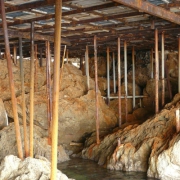Frankenstein disease in LNG contracts
LNG agreements pieced together from dead contractual bodies are dangerous. Still many see them as their only source of inspiration. They can do better.
Have you ever heard of Frankenstein’s disease? No? Let’s be frank. I have invented the name. But no other word describes the condition better.
As living things, all contracts on earth age. Contracts are created for a particular situation between two or more specific parties to take care of a specific issue at a certain time. All this happens in a specific economic environment. Do I sound like a schoolmaster?
Let’s assume now – for the sake of argument – that when a particular contract takes care of a certain situation in a perfect manner, the contract would be immaculate. We all know that contracts are always compromised so there is no such thing as perfection but I will hang in this fiction for the sake of the point I want to make.
The parties made several assumptions about their particular future when they worked out the contractual solution. As always with assumptions, a number of them will be right, and many will be wrong. As soon as the contract is concluded, reality starts to spoil the perfect harmony (again, there is no such thing as perfection) and the struggle called contractual life starts.
In most long-term contractual lives, this struggle gets resolved by successive revisions to keep the parties happy and the consensus intact. The fact is, that no contract can possibly encompass all possible scenarios that the contract will have to endure. Wow, here is the schoolmaster again.
Pushed to the extreme, this means that no contract can be like the other, as no situation is exactly like the other. To make life a little more effective (otherwise, we would all be engaged in endless haggling) templates have been developed for most of the common (and quite a few uncommon) situations in life. This is generally a good thing.
In long-term LNG this is dangerous. Not because those LNG contracts don’t lend themselves to standardization. They do, just as any other contract does. But the existing contractual base on LNG is still pretty thin, as there are not too many deals every year. Those existing contracts are often taken as an example of a new agreement. And this is where disaster hits.
A contract, that was concluded in the 1990s between an African and an American party is ill-suited to serve as an example for a situation between a North Western European and a Middle Eastern party in 2012 (just for the sake of an example). Still, whole swathes of old legacy agreements are virtually copy-pasted into new agreements. The old contract pieces come from dead contractual bodies and are resuscitated in the new agreement. You have a Frankenstein.
Sometimes a whole agreement is being resuscitated in one piece. That’s a Zombie then.
Long-term LNG is still unfinished business and will undergo radical change for at least another decade or so. Things will settle eventually, but that’s not a luxury you can indulge in if you are negotiating your long-term LNG agreement right now. So, take your old example contracts found in a Google search and shred them. This gives you a little more work, a lot more freedom, and heavier legal bills but it will pay off handsomely when you don’t have to deal with a monster later.


















Leave a Reply
Want to join the discussion?Feel free to contribute!